5 history bites about your cup of Ceylon tea
Ceylon tea is famous and according to most experts it is the best and the most flavourful black tea in the world. 2017 is a landmark year for Ceylon tea where 150 years ago the commercial production of tea began in Sri Lanka. Here are some nerdy history bites that you may find interesting and perhaps even increase your appreciation of the sound legacy of the humble cup of tea you sip every afternoon.
 So, 150 years ago in an island far far away
Who? James Taylor
Born in Aberdeen in Scotland as a son of humble wheleright, a 17 year old James Taylor arrived in Sri Lanka in 1852. He soon took up the task of producing tea after successfully establishing the cultivation in Ceylon of the Cinchona tree, the bark of which is used to manufacture the anti-malarial drug quinine. Well-built and strong, Taylor was bright and hardworking and what distinguished Taylor was his ability not only to grow tea on a commercial scale, but also to master its processing. This led him to invent the rolling machine; an essential part of tea processing is crushing the leaves to release the juice and enzymes that provide flavour.
So, 150 years ago in an island far far away
Who? James Taylor
Born in Aberdeen in Scotland as a son of humble wheleright, a 17 year old James Taylor arrived in Sri Lanka in 1852. He soon took up the task of producing tea after successfully establishing the cultivation in Ceylon of the Cinchona tree, the bark of which is used to manufacture the anti-malarial drug quinine. Well-built and strong, Taylor was bright and hardworking and what distinguished Taylor was his ability not only to grow tea on a commercial scale, but also to master its processing. This led him to invent the rolling machine; an essential part of tea processing is crushing the leaves to release the juice and enzymes that provide flavour.
 James Taylor devoted 40 years to the industry; his only break was a trip to Darjeeling to learn more about tea growing. Taylor became a victim of his own success, for the rapid growth of the industry meant that large companies became involved, leaving small planters like himself vulnerable. In April 1892 he was ordered to take sick leave by the estate management. Being perfectly healthy he refused, and was asked to resign. He contracted Dysentery soon afterwards and died within days at the estate. 24 men carried Taylor’s coffin the 18 miles to Kandy, two gangs of 12 taking turns. Taylor was buried in the Mahaiyawa Cemetery near Kandy. The inscription on his tombstone reads: “In pious memory of James Taylor, of Loolecondera Estate, Ceylon, the Pioneer of the Tea and Cinchona Enterprises in this Island, who died May 2, 1892 aged 57 years.”
Why? The end of coffee
Before tea, coffee was the main export and Ceylon was a major player in the world market. Coffee plants were always grown in the country but it was the Dutch who governed the low-land region who first started growing it as a crop. Even though they found the quality to be of high standard the crop needed elevation which made them abandon the initiative altogether. Once the British came they moved to the highlands and spurred the coffee rush, a thriving industry which soon came to an abrupt end with the rapid spread of the fungus which was named by the planters as Devastating Emily
James Taylor devoted 40 years to the industry; his only break was a trip to Darjeeling to learn more about tea growing. Taylor became a victim of his own success, for the rapid growth of the industry meant that large companies became involved, leaving small planters like himself vulnerable. In April 1892 he was ordered to take sick leave by the estate management. Being perfectly healthy he refused, and was asked to resign. He contracted Dysentery soon afterwards and died within days at the estate. 24 men carried Taylor’s coffin the 18 miles to Kandy, two gangs of 12 taking turns. Taylor was buried in the Mahaiyawa Cemetery near Kandy. The inscription on his tombstone reads: “In pious memory of James Taylor, of Loolecondera Estate, Ceylon, the Pioneer of the Tea and Cinchona Enterprises in this Island, who died May 2, 1892 aged 57 years.”
Why? The end of coffee
Before tea, coffee was the main export and Ceylon was a major player in the world market. Coffee plants were always grown in the country but it was the Dutch who governed the low-land region who first started growing it as a crop. Even though they found the quality to be of high standard the crop needed elevation which made them abandon the initiative altogether. Once the British came they moved to the highlands and spurred the coffee rush, a thriving industry which soon came to an abrupt end with the rapid spread of the fungus which was named by the planters as Devastating Emily
 When? 1867
Fortunately, George Thwaites, Director of the renowned Royal Botanic Gardens at Peradeniya, realised the potential danger of fungus on coffee monoculture. During the 1850s and 60s he advocated experimentation with other crops, especially tea, which culminated with the arrival at Peradeniya of some Assam tea seeds. Thwaites found the bright and young James Taylor as the perfect candidate to cultivate Tea as commercial industry and in 1867, an area of 19 acres was cleared to grow Assam tea, and these seedlings became crop-bearing plants and represented the birth of the brand Ceylon Tea which became famous around the world. Within just two years, “Devastating Emily” hit as predicted and destroyed the coffee industry in Sri Lanka.
When? 1867
Fortunately, George Thwaites, Director of the renowned Royal Botanic Gardens at Peradeniya, realised the potential danger of fungus on coffee monoculture. During the 1850s and 60s he advocated experimentation with other crops, especially tea, which culminated with the arrival at Peradeniya of some Assam tea seeds. Thwaites found the bright and young James Taylor as the perfect candidate to cultivate Tea as commercial industry and in 1867, an area of 19 acres was cleared to grow Assam tea, and these seedlings became crop-bearing plants and represented the birth of the brand Ceylon Tea which became famous around the world. Within just two years, “Devastating Emily” hit as predicted and destroyed the coffee industry in Sri Lanka.
 Where? Loolecondera Estate
James Taylor planted the first tea seeds he obtained from the Peradeniya Botanical Gardens in Lot 7 of Loolecondera Estate making it the heart of the history and legacy of Ceylon Tea. Taylor built a fully-equipped tea factory in the same estate in 1872. In addition to the invention of the rolling machine; he developed a waterwheel to supply power that dipped into a stream. The estate and factory still exist to this day and functions commercially where visitor can take a glimpse to its history and legacy by staying at the boutique hotel Taylors Hill and visiting the factory nearby, a living museum to be enjoyed by all.
Where? Loolecondera Estate
James Taylor planted the first tea seeds he obtained from the Peradeniya Botanical Gardens in Lot 7 of Loolecondera Estate making it the heart of the history and legacy of Ceylon Tea. Taylor built a fully-equipped tea factory in the same estate in 1872. In addition to the invention of the rolling machine; he developed a waterwheel to supply power that dipped into a stream. The estate and factory still exist to this day and functions commercially where visitor can take a glimpse to its history and legacy by staying at the boutique hotel Taylors Hill and visiting the factory nearby, a living museum to be enjoyed by all.
 How? Auction and trade
In 1873 Taylor sent a package of tea to London, but it wasn’t until 1875 that regular consignments began, when 653 kilos were exported. In 1881 it made its first appearance at the London auctions but Taylor may well have been shipping for private sale before then. From that time onwards tea export increased exponentially.
How? Auction and trade
In 1873 Taylor sent a package of tea to London, but it wasn’t until 1875 that regular consignments began, when 653 kilos were exported. In 1881 it made its first appearance at the London auctions but Taylor may well have been shipping for private sale before then. From that time onwards tea export increased exponentially.
 The wealthy Sir Thomas Lipton met with James Taylor during his visit to the island in 1890 and immediately saw the business potential even though drinking tea in England proved to be quite expensive for the working class. Being the businessmen that he is, he cut out the middlemen by growing his own tea, thereby reducing the retail price, and selling it through his stores using the catchy slogan from the tea gardens to the teapot”.
Harshi Hewage is the Marketing Manager at Manor House Concepts.
If you would like to be a guest blogger on A Luxury Travel Blog in order to raise your profile, please contact us.
The wealthy Sir Thomas Lipton met with James Taylor during his visit to the island in 1890 and immediately saw the business potential even though drinking tea in England proved to be quite expensive for the working class. Being the businessmen that he is, he cut out the middlemen by growing his own tea, thereby reducing the retail price, and selling it through his stores using the catchy slogan from the tea gardens to the teapot”.
Harshi Hewage is the Marketing Manager at Manor House Concepts.
If you would like to be a guest blogger on A Luxury Travel Blog in order to raise your profile, please contact us.
 So, 150 years ago in an island far far away
Who? James Taylor
Born in Aberdeen in Scotland as a son of humble wheleright, a 17 year old James Taylor arrived in Sri Lanka in 1852. He soon took up the task of producing tea after successfully establishing the cultivation in Ceylon of the Cinchona tree, the bark of which is used to manufacture the anti-malarial drug quinine. Well-built and strong, Taylor was bright and hardworking and what distinguished Taylor was his ability not only to grow tea on a commercial scale, but also to master its processing. This led him to invent the rolling machine; an essential part of tea processing is crushing the leaves to release the juice and enzymes that provide flavour.
So, 150 years ago in an island far far away
Who? James Taylor
Born in Aberdeen in Scotland as a son of humble wheleright, a 17 year old James Taylor arrived in Sri Lanka in 1852. He soon took up the task of producing tea after successfully establishing the cultivation in Ceylon of the Cinchona tree, the bark of which is used to manufacture the anti-malarial drug quinine. Well-built and strong, Taylor was bright and hardworking and what distinguished Taylor was his ability not only to grow tea on a commercial scale, but also to master its processing. This led him to invent the rolling machine; an essential part of tea processing is crushing the leaves to release the juice and enzymes that provide flavour.
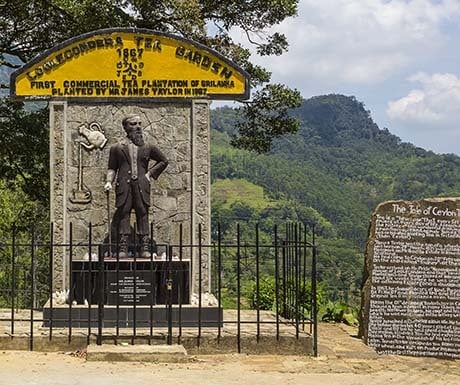 James Taylor devoted 40 years to the industry; his only break was a trip to Darjeeling to learn more about tea growing. Taylor became a victim of his own success, for the rapid growth of the industry meant that large companies became involved, leaving small planters like himself vulnerable. In April 1892 he was ordered to take sick leave by the estate management. Being perfectly healthy he refused, and was asked to resign. He contracted Dysentery soon afterwards and died within days at the estate. 24 men carried Taylor’s coffin the 18 miles to Kandy, two gangs of 12 taking turns. Taylor was buried in the Mahaiyawa Cemetery near Kandy. The inscription on his tombstone reads: “In pious memory of James Taylor, of Loolecondera Estate, Ceylon, the Pioneer of the Tea and Cinchona Enterprises in this Island, who died May 2, 1892 aged 57 years.”
Why? The end of coffee
Before tea, coffee was the main export and Ceylon was a major player in the world market. Coffee plants were always grown in the country but it was the Dutch who governed the low-land region who first started growing it as a crop. Even though they found the quality to be of high standard the crop needed elevation which made them abandon the initiative altogether. Once the British came they moved to the highlands and spurred the coffee rush, a thriving industry which soon came to an abrupt end with the rapid spread of the fungus which was named by the planters as Devastating Emily
James Taylor devoted 40 years to the industry; his only break was a trip to Darjeeling to learn more about tea growing. Taylor became a victim of his own success, for the rapid growth of the industry meant that large companies became involved, leaving small planters like himself vulnerable. In April 1892 he was ordered to take sick leave by the estate management. Being perfectly healthy he refused, and was asked to resign. He contracted Dysentery soon afterwards and died within days at the estate. 24 men carried Taylor’s coffin the 18 miles to Kandy, two gangs of 12 taking turns. Taylor was buried in the Mahaiyawa Cemetery near Kandy. The inscription on his tombstone reads: “In pious memory of James Taylor, of Loolecondera Estate, Ceylon, the Pioneer of the Tea and Cinchona Enterprises in this Island, who died May 2, 1892 aged 57 years.”
Why? The end of coffee
Before tea, coffee was the main export and Ceylon was a major player in the world market. Coffee plants were always grown in the country but it was the Dutch who governed the low-land region who first started growing it as a crop. Even though they found the quality to be of high standard the crop needed elevation which made them abandon the initiative altogether. Once the British came they moved to the highlands and spurred the coffee rush, a thriving industry which soon came to an abrupt end with the rapid spread of the fungus which was named by the planters as Devastating Emily
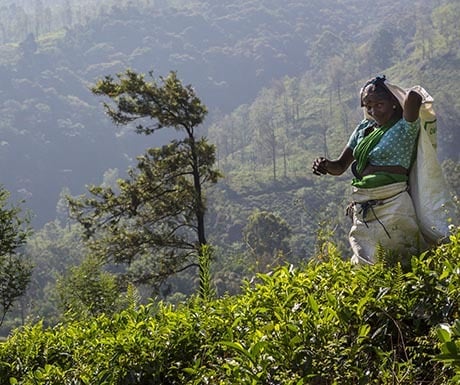 When? 1867
Fortunately, George Thwaites, Director of the renowned Royal Botanic Gardens at Peradeniya, realised the potential danger of fungus on coffee monoculture. During the 1850s and 60s he advocated experimentation with other crops, especially tea, which culminated with the arrival at Peradeniya of some Assam tea seeds. Thwaites found the bright and young James Taylor as the perfect candidate to cultivate Tea as commercial industry and in 1867, an area of 19 acres was cleared to grow Assam tea, and these seedlings became crop-bearing plants and represented the birth of the brand Ceylon Tea which became famous around the world. Within just two years, “Devastating Emily” hit as predicted and destroyed the coffee industry in Sri Lanka.
When? 1867
Fortunately, George Thwaites, Director of the renowned Royal Botanic Gardens at Peradeniya, realised the potential danger of fungus on coffee monoculture. During the 1850s and 60s he advocated experimentation with other crops, especially tea, which culminated with the arrival at Peradeniya of some Assam tea seeds. Thwaites found the bright and young James Taylor as the perfect candidate to cultivate Tea as commercial industry and in 1867, an area of 19 acres was cleared to grow Assam tea, and these seedlings became crop-bearing plants and represented the birth of the brand Ceylon Tea which became famous around the world. Within just two years, “Devastating Emily” hit as predicted and destroyed the coffee industry in Sri Lanka.
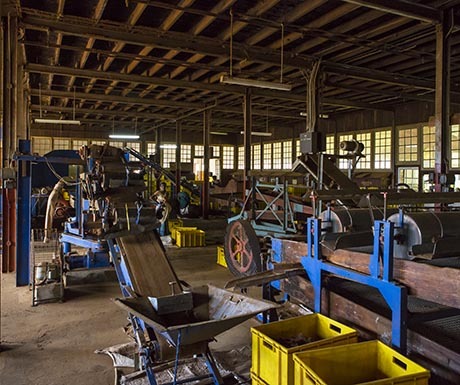 Where? Loolecondera Estate
James Taylor planted the first tea seeds he obtained from the Peradeniya Botanical Gardens in Lot 7 of Loolecondera Estate making it the heart of the history and legacy of Ceylon Tea. Taylor built a fully-equipped tea factory in the same estate in 1872. In addition to the invention of the rolling machine; he developed a waterwheel to supply power that dipped into a stream. The estate and factory still exist to this day and functions commercially where visitor can take a glimpse to its history and legacy by staying at the boutique hotel Taylors Hill and visiting the factory nearby, a living museum to be enjoyed by all.
Where? Loolecondera Estate
James Taylor planted the first tea seeds he obtained from the Peradeniya Botanical Gardens in Lot 7 of Loolecondera Estate making it the heart of the history and legacy of Ceylon Tea. Taylor built a fully-equipped tea factory in the same estate in 1872. In addition to the invention of the rolling machine; he developed a waterwheel to supply power that dipped into a stream. The estate and factory still exist to this day and functions commercially where visitor can take a glimpse to its history and legacy by staying at the boutique hotel Taylors Hill and visiting the factory nearby, a living museum to be enjoyed by all.
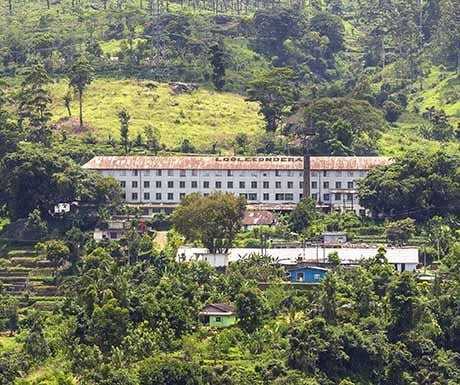 How? Auction and trade
In 1873 Taylor sent a package of tea to London, but it wasn’t until 1875 that regular consignments began, when 653 kilos were exported. In 1881 it made its first appearance at the London auctions but Taylor may well have been shipping for private sale before then. From that time onwards tea export increased exponentially.
How? Auction and trade
In 1873 Taylor sent a package of tea to London, but it wasn’t until 1875 that regular consignments began, when 653 kilos were exported. In 1881 it made its first appearance at the London auctions but Taylor may well have been shipping for private sale before then. From that time onwards tea export increased exponentially.
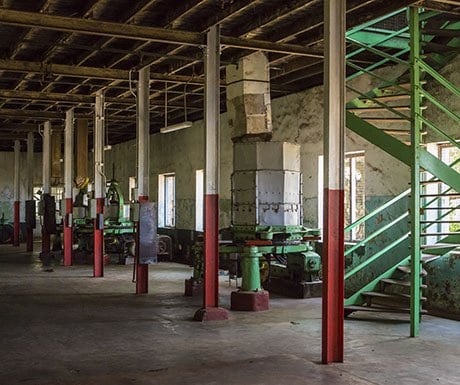 The wealthy Sir Thomas Lipton met with James Taylor during his visit to the island in 1890 and immediately saw the business potential even though drinking tea in England proved to be quite expensive for the working class. Being the businessmen that he is, he cut out the middlemen by growing his own tea, thereby reducing the retail price, and selling it through his stores using the catchy slogan from the tea gardens to the teapot”.
Harshi Hewage is the Marketing Manager at Manor House Concepts.
If you would like to be a guest blogger on A Luxury Travel Blog in order to raise your profile, please contact us.
The wealthy Sir Thomas Lipton met with James Taylor during his visit to the island in 1890 and immediately saw the business potential even though drinking tea in England proved to be quite expensive for the working class. Being the businessmen that he is, he cut out the middlemen by growing his own tea, thereby reducing the retail price, and selling it through his stores using the catchy slogan from the tea gardens to the teapot”.
Harshi Hewage is the Marketing Manager at Manor House Concepts.
If you would like to be a guest blogger on A Luxury Travel Blog in order to raise your profile, please contact us.Did you enjoy this article?
Receive similar content direct to your inbox.

